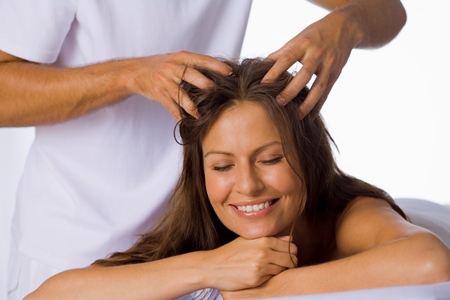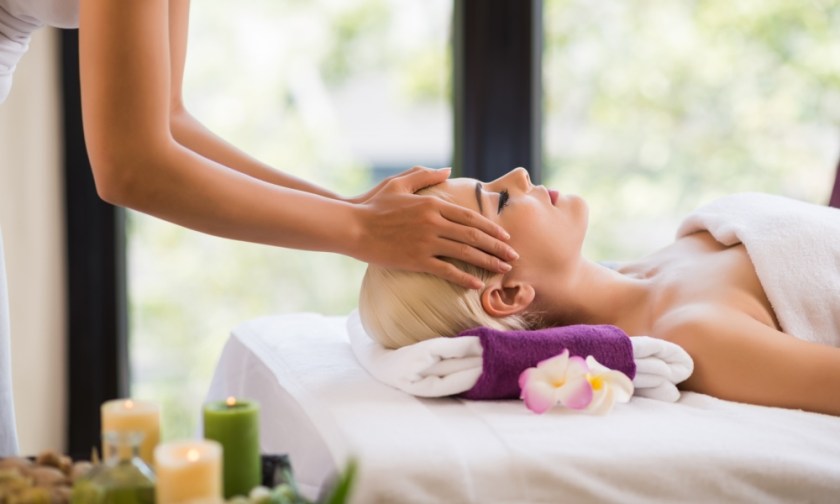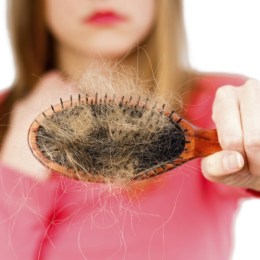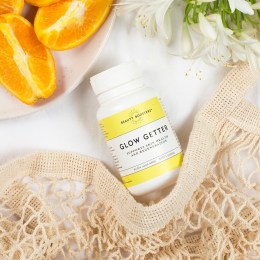Would you know how to treat a scalp condition? What is at the root of aging hair? Could it all tie into the aging skin on the scalp? Daily hair loss is natural and, although there is no quick fix, research has found that many of the cosmeceuticals used to maintain skin health produce the same benefits when applied to the scalp and hair. Rhonda Allison explains.

The scalp, and thus the hair, ages much like the rest of the body’s skin. It loses tone and elasticity, and cell production declines. As the scalp ages, the hair weakens. It is part of the life cycle of the hair follicle, but that lifespan can be extended when the same methods and ingredients for skin care are applied to the scalp. So why do skin care professionals and therapists stop at the hairline?
Understanding hair
The hair follicle is made up of the hair bulb, the inner root sheath and the hair shaft. The hair bulb is onion-shaped, and contains the hair matrix – the germ layer that forms the inner root sheath – as well as the hair shaft, which comprises the medulla, cortex and cuticle. Blood vessels supply the follicle with much of its nutrients, but topical formulas can also provide a boost of nourishment, especially if the blood vessels aren’t supplying an adequate amount. The hair bulb, along with the inner sheath, secures the hair shaft within the follicle, and is continuous with the basal layer of the interfollicular epidermis.
In healthy conditions, hair strands typically grow for two to six years at approximately half an inch per month. At any given time, 10% of the hair on the head is in a resting phase. After this resting period, which typically lasts a few months, the hair falls out and is usually replaced with new hair. The cycle continues like clockwork, but as the scalp ages or is affected by a disorder or disease, the cycle can be disrupted.
Internal and external nutrition is vital to correcting – or better yet, avoiding – disruptions. Internally, healthy hair thrives on micronutrients, including vitamin B, amino acids and proteins. Externally, the hair and scalp need a system of preventive and corrective care that includes cleansing, strengthening, building and restoring. Together, these factors help support healthy hair cycles, which include the following three phases.
- Anagen phase The active growth phase of hair follicles.
- Catagen phase The short transition and development stage.
- Telogen phase The resting phase of the hair follicle.
Factors that can disrupt the cycle and trigger hair loss include disease and illness; stress; hormones; nutritional deficiencies; and medications and surgery. Knowing these potential cycle disrupters, what can skin care professionals do to correct hair damage and the progression of hair aging?
Applying esthetic knowledge to hair
Two major components of skin and hair are keratin and mitochondria. Keratin refers to a family of sulfur-containing fibrous proteins that form the key structural material of the outer layer of skin, hair and nails. Keratin, chains of polypeptides, is essential in forming the inner and outer root sheaths, as well as the hair shaft through keratinization.
The mitochondria, known as the cell’s powerhouses, act like the digestive system to regulate the intake and breakdown of nutrients to create energy for cells. Maintaining hair and skin – or scalp – health and slowing the aging process requires both cellular energy and keratin support.
Studies have shown excess mitochondria damage can result in apoptosis, or cell death, a characteristic of aging. When mitochondrial damage occurs, skin, including the scalp, will suffer from tone loss, thinness and abnormal collagen accumulation. Keratin also suffers through excessive styling damage and chemicals, as well as a lack of proteins and amino acids. Through research, it is now known that many of the ingredients traditionally used in the treatment room also have the power to inhibit the progression of hair damage and loss by stimulating mitochondria, supporting keratin and fighting free radicals. Some of these ingredients include the following.
Peptides and amino acids Ingredients such as Pterocarpus marsupium bark help improve hair density, increase the number of follicles, prevent scalp disorders, and stimulate the cells that improve root anchoring and strength.
Antioxidants Thioctic acid is a powerful dual antioxidant that maintains the protection of extracellular proteins fights free radicals and limits lipid oxidative degradation.
Vitamin B. Cyclohexane-1,2,3,4,5,6-hexol is part of a complex that stimulates protein biosynthesis and cell vitality, proliferates cell growth and increases energy production.
Enzymes and proteins The specialised complex of panthenyl ethyl ether, milk protein, lactose, cyclohexane-1,2,3,4,5,6-hexol, acetylcysteine and methionine, which stimulate protein biosynthesis and cell vitality, help increase energy production in scalp tissue, and anchor hair to the root. Hydrolyzed lupine protein also works to slow hair loss and encourage nutrient assimilation to help hair growth.
Organic plant stem cell technology This extracts the portion of the plant responsible for development and life, and is also extremely effective in human cell regeneration and healthy hair. Apple stem cells are used to deliver concentrated doses of antioxidants and inhibit the process of cellular aging to create an environment for healthy hair growth.
Although these ingredients are vital, it’s important to take into consideration ingredient levels and how they are being combined. For example, the combination of phenyl butyl nitrone, coenzyme Q-10, thiotic acid, adenine and acetylcarnitine, has the ability to help increase mitochondria function and longevity in both the skin and hair, as well as promote stronger, thicker and fuller hair. Just as with skin care formulas, be sure to go beyond the ingredient deck and learn what, if any, research supports the formulation.
Treating hair in the treatment room
When taking into consideration that scalp is skin, and knowing that the same ingredients used in effective skin care can also improve hair health, it becomes clear that skin care professionals have a unique opportunity to help clients maintain total skin health. Clients come to you for skin issues on a regular basis, yet many skin care professionals tend to stop at the hairline. The scalp truly is a natural extension of what you do.
Just as with skin issues, thinning or damaged hair can have a significant impact on a client’s spirit. But the tools and information are now available to help clients achieve total skin health and, in turn, boost their confidence and overall well-being. Because clients are already in your treatment room, take the time to share your knowledge. Below are ways to make the conversation happen organically.
- During a scalp massage or when putting on a client’s hair bonnet, ask what they use for hair care.
- Place diagrams of the hair structure in your facility or treatment room.
- If you notice acne or other skin issues spreading beyond the hairline, discuss a treatment plan.
- Listen to cues from your clients: Are they already talking about hair loss with you?
- Display hair care products in your facility with informational brochures about scalp and hair health.
This will take some effort on your part, since thus far clients have been conditioned to go to the salon for hair care. Remember, however, that hair begins at the scalp, which is in the realm of skin care, so you already have the tools and knowledge to effectively treat hair issues.
 By Rhonda Allison, a pioneer in the skin care industry is the founder and CEO of Rhonda Allison Cosmeceuticals, as well as an author and internationally known speaker with more than 30 years of aesthetic experience: www.rhondaallison.com
By Rhonda Allison, a pioneer in the skin care industry is the founder and CEO of Rhonda Allison Cosmeceuticals, as well as an author and internationally known speaker with more than 30 years of aesthetic experience: www.rhondaallison.com




